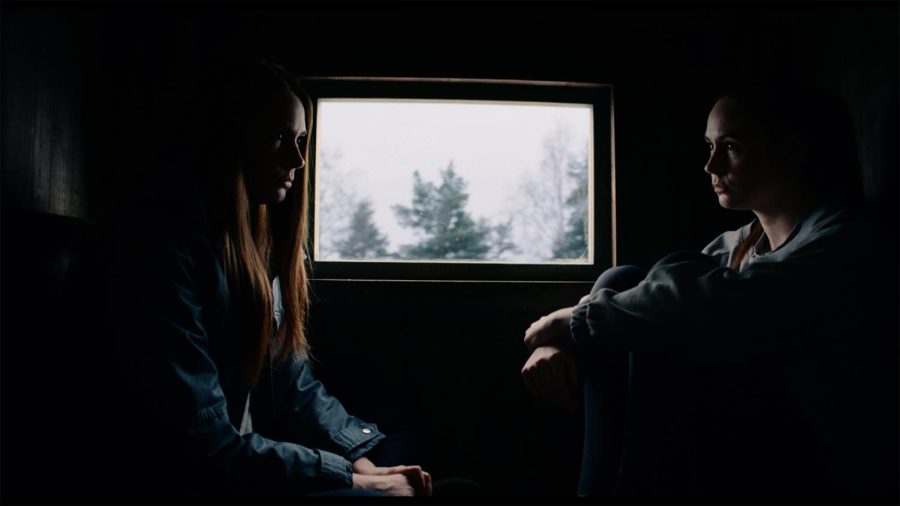Sundance: ‘Dual’ Fascinates with Darkness and Obscurity
January 23, 2022
Riley Stearns has proven a unique and interesting addition to the world of off-kilter indie cinema. While I have only seen two of his three feature films, Stearns’ distinctive style oozes through the screen in quite an impressive fashion — deadpan, alienating, off-putting and absolutely my thing.
Dark and Comedically Strange
“Dual” follows Sarah (Karen Gillan), an average young woman who is just going through the motions of life, screening calls from her mother (Maija Paunio) and maintaining a mundane, vanilla relationship with her boyfriend Peter (Beulah Koale). When Sarah finds out she is terminally ill, she opts to receive a cloning procedure which allows a double of Sarah to live on after she is gone. After all, who would want to burden their loved ones with the sadness of death?
Tensions arise however when Sarah makes a miraculous recovery. To determine who gets to live Sarah’s life, the clone and the original are demanded to face each other in a court-mandated duel to the death because, as it states in the film, it would be utterly ridiculous to have both of them walking around.
With “Dual,” Stearns crafts a dark and strange marriage between a Yorgos Lanthimos film and one from Quentin Tarantino. The film places us in a world unrecognizable from our own with a certain tinge of strangeness. From the first scene, it grasps us with its fascinating concept then slams on the brakes. Continuously, “Dual” feeds us just enough to satisfy while still leaving us hungry for more.
The film is heightened by hilariously dark performances all around the table. Gillan especially impressed me with two unsmiling yet deeply expressive performances. I also felt Aaron Paul was wonderful in his role as Trent, the cold and violent personal trainer. The movie is as its best when both Gillan and Paul take the screen.
Gloomy, Obscure and Fascinating
The world created by Stearns is wonderfully gloomy and obscure. There is no time for subtlety as characters say exactly what they mean regardless of consequence. This lead to many moments of dry wit that kept me entertained while creating a sort of distance. I felt a similar way upon my viewing of Stearns’ second picture “The Art of Self Defense.” The writing style is gripping and the ideas it raises are intriguing. However, the way these ideas are presented keep the audience at the same, odd distance, making the film difficult to connect with. Stearns’ work is fascinating to watch, but challenging to fall in love with.
These elements are cohesive, though. The lack of audience connection feels intentional and the film fits together purposefully. In the same vein, there’s a numbness that’s ever present with “Dual,” both on the screen and in the audience. Sarah, upon finding out she is going to die asks, “Why aren’t I crying?” We want to engage, be involved, but Stearns gently holds us back. He places his hand on our shoulders and points forward, content to watch our inability to move our gaze from his dark reality.
“Dual” is worth the watch. The chances of it knocking your socks off is slim, but it is fascinating to be a part of.








